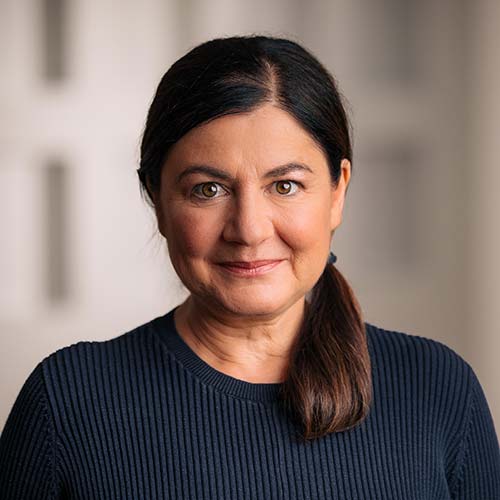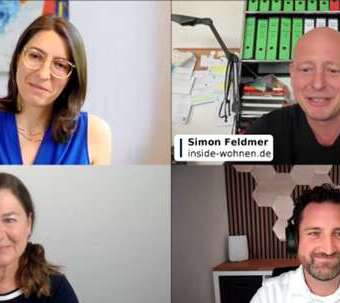The rheingold Institute surveyed around 2,000 people for Interhyp on their housing situation, their housing dreams and their real estate plans. 58 percent of the people state that they are very clearly affected by the general additional financial burden; great uncertainty and a certain wait-and-see attitude are the consequences. The biggest housing dream, the single-family home, has become significantly smaller for the first time since the study series began, at 53 percent. At the same time, there are new opportunities: more supply of properties and prices can be negotiated - especially for less energy-efficient properties.
Corona crisis, climate crisis, energy crisis, Ukraine war, recession, inflation: the current situation is having an impact on everyday life and the financial possibilities as well as the emotional world of Germans. A clouded view of the real estate market and a wait-and-see attitude when it comes to buying a home are the consequences - this is shown by the latest dream home study 2023 of Interhyp AG. At the same time, the once cherished old building is becoming the nightmare of many prospective buyers - and the need for detailed advice on the subject of energy-efficient renovation is increasing enormously.
An ambivalent picture can be observed on the real estate market right now: "We see a great deal of uncertainty and a certain rigidity on the one hand - and a great longing for a home of one's own on the other," says Mirjam Mohr, Member of the Management Board of Interhyp AG.
Arrangement instead of departure - and smaller dreams
This uncertainty, triggered by the still tense economic and geopolitical situation, affects the dreams of the respondents. As part of the study, participants were asked which type of house or apartment they would choose if they could fulfill their personal dream of living. The result: the detached single-family home remains the Germans' dream. However, this dream has also become significantly smaller for the first time since the study series began. At 53 percent (2018: 60 percent, 2019: 63 percent, 2021: 65 percent, 2022: 64 percent), it is still by far the most popular type of home, but has lost 11 percentage points compared with the previous year.
"People are dreaming smaller," says Mirjam Mohr. "Overall, large properties have tended to lose percentage points across the board, whereas smaller, more modest solutions like the townhome (up 2 percentage points) and the Tiny House (up 3 percentage points) have seen slight gains."
You take what you get: In the current dream home study, a strong devaluation in relevance compared to the previous year is generally visible for "size and living space" (81 percent, -13 percentage points compared to 2022) and "room layout" (83 percent, -12 percentage points compared to 2022). Mirjam Mohr adds, "These developments are also visible in our Interhyp figures: while the average living space for houses in the first quarter of 2022 was still 165 sqm, it is 153 sqm in the third quarter of 2023."
Undeniably, the real estate market has become more challenging since the end of the low-interest phase
Mirjam Mohr
Eighty-four percent of those surveyed in the Wohntraum study feel the current real estate market is tight and difficult and see few options. The reasons given for this are: High prices, increased construction interest rates, an empty market, a shortage of skilled workers, uncertainty regarding legal regulations (e.g., the hanging game surrounding the Building Energy Act and the resulting costs). Only 25 percent can imagine that the current situation could also create opportunities.
Mirjam Mohr: "There is no doubt that the real estate market has become more challenging since the end of the low-interest phase, but there are also new opportunities: There is more supply of real estate again. Prospective buyers have more peace and quiet to look at the properties on offer in depth. Prices can be negotiated again, which was hardly possible during the low-interest phase. Particularly in the case of less energy-efficient existing properties, noticeable price reductions are possible. To be in a negotiation-proof position here, it is advisable to draw up a clear refurbishment plan and to include the costs incurred in the purchase price negotiations."
The old building as the new nightmare
Among those surveyed in the Living Dreams Study, a great deal of uncertainty can be felt, especially when it comes to the subject of energy. Politicians have played a major role in this with the grueling standoff over the Building Energy Act (GEG), and there is still a lack of clarity on important points such as funding opportunities. The existence became with the asked ones the fright spectre: Tenants who can imagine buying a property exclude 64 percent of unrenovated existing properties from their considerations with a clear "no". For comparison: Renovated inventory real estates are excluded only by 6 per cent and energy-efficient new buildings by 12 per cent. The top reasons for excluding unrenovated properties include too much effort for modernization, insulation and incalculable, excessive energy costs.
Expert Mirjam Mohr emphasizes: "At Interhyp, we offer important tools to help you find your way through the energy and subsidy jungle: From a free renovation calculator, to intensive consulting dialogue on the topic of energy and possible subsidies, to cooperation with building experts and experts for photovoltaic solutions."
Out of the rigidity
70 percent of the tenants surveyed in the dream home study have the desire to live in property one day - but only a few take advantage of professional advice to realize this desire. "Tips from friends or independent research are certainly helpful. BUT: Especially for such an extensive and individual project as real estate financing, professional advice is essential - and not just when it comes to the concrete financing," notes Mirjam Mohr.
"Through an individual financing consultation, prospective buyers can find out what is financially possible - and this does not yet require a concrete real estate project. Often, more is possible than many people think, even if in some cases the dream of owning your own property may be realized differently than initially thought, for example, through a smaller property, a location on the outskirts of town or an investment instead of owner-occupation. The important thing is to get out of the rut, take the first step and get advice," summarizes Mirjam Mohr.





